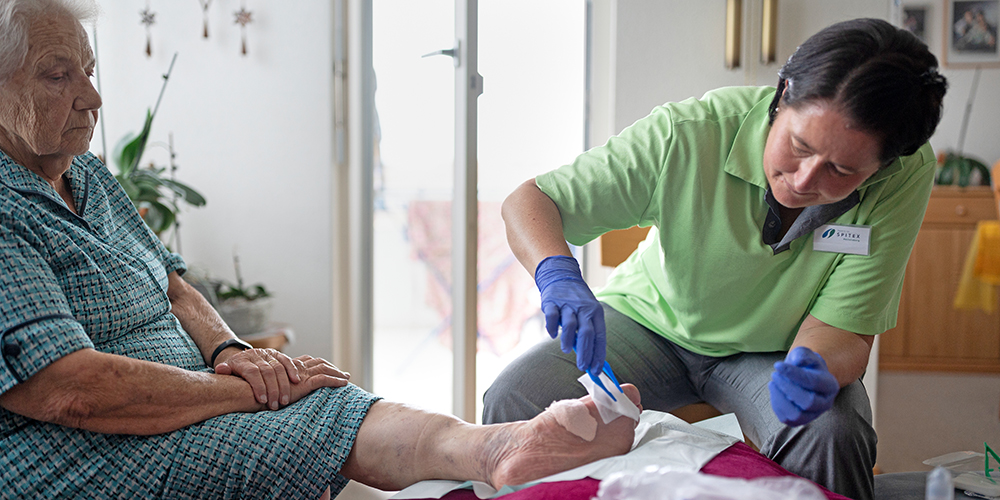Home care organizations need more resources and better networking
The Institute of Nursing Science at the University of Basel has carried out a large-scale study to take the pulse of home care provision in Switzerland. The conclusion: the organizations are delivering good work – but policy decisions need to be made if they are to continue to provide their services in the future.
27 April 2023 | Catherine Weyer
Along with hospitals, general practitioners and care homes, home care is a vital cornerstone of healthcare provision, particularly where older people are concerned. Home care not only alleviates the burden on hospitals and care homes but enables those in need of care to live independently in their own homes for as long as possible.
SPOTnat: Coordination and Quality of Home Care – a National Study, carried out by the Institute of Nursing Science at the University of Basel, investigated the state of home care in 2021. The study covers a range of areas, including collaboration and communication within teams, coordination, physical and mental health, and employee workloads. It also considers the home care experience from the point of view of clients and their families.
High quality, but more coordination needed
“Most home care employees are happy with the quality of the care they provide,” explains Professor Franziska Zúñiga, who led the study. This was not necessarily expected, given that the study took place during the coronavirus pandemic, which stretched care staff to their limits. “We should, however, point out the possibility that the organizations that took part in the study were precisely those that were not totally overwhelmed with work,” Zúñiga continues.
As the first comprehensive national survey of home care provision in Switzerland, the study yields other important results. Zúñiga concludes, for example, that urgent action needs to be taken to improve coordination: “We are lacking the structures that are needed to organize and join up services involving multiple healthcare providers,” the nursing scientist comments.
The lack of a mandatory electronic patient dossier to be used by all service providers, for example, inevitably results in information gaps. “A home care employee cannot provide their client with proper care if they don’t know which medication the GP prescribed the client yesterday or why the client was admitted to the hospital for surgery,” explains Zúñiga. Home care employees also lack the time and resources to chase up every change with the relevant bodies.
Link to nursing initiative
According to Zúñiga, communication among colleagues both inside and outside of the home care sector is also unsatisfactory. Interprofessional communication – which is vital to well-coordinated, patient-centric care – often occurs on a voluntary basis and is not covered financially. Communication is also essential if colleagues are to provide mutual support when faced with technical questions or challenging situations.
These aspects are important when it comes to guaranteeing the future of home care, Zúñiga points out. “There is a link to the nursing initiative: a supportive working environment is the key to retaining people in the profession. We need to address this if we want to have enough home care staff in the future,” she adds. After all, 12% of the employees of the participating home care organizations handed in their notice in 2020.
The Institute of Nursing Science hopes that the data contained in the study will provide a basis for urgently needed policy reviews – both at federal level, to promote a move to digital communication solutions, and at communal level, where decisions on pay scales within the home care sector are made. In Zúñiga’s view, there is no doubting that, “Home care is of systemic importance. We need to ensure that the organizations involved are in a position to carry on providing their important services in the future.”



